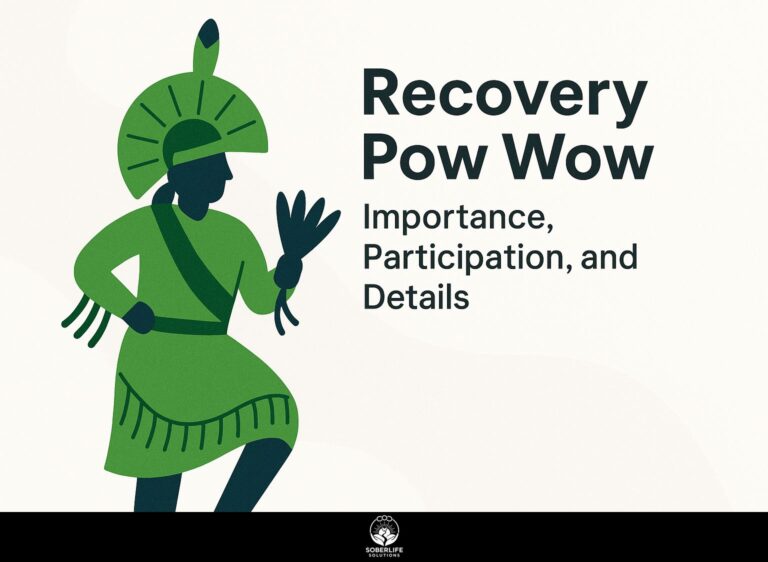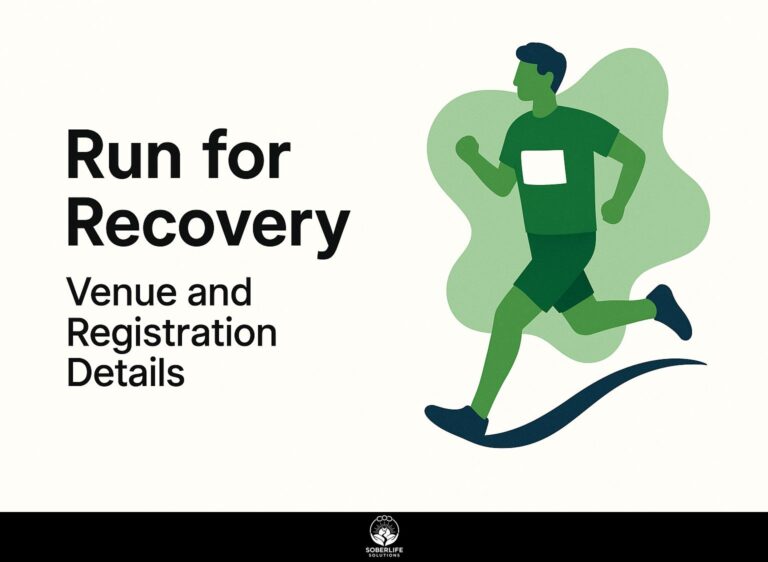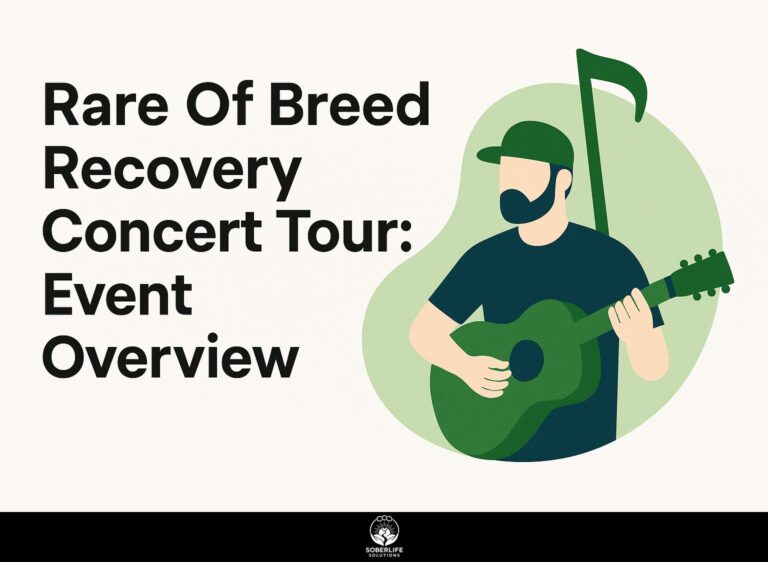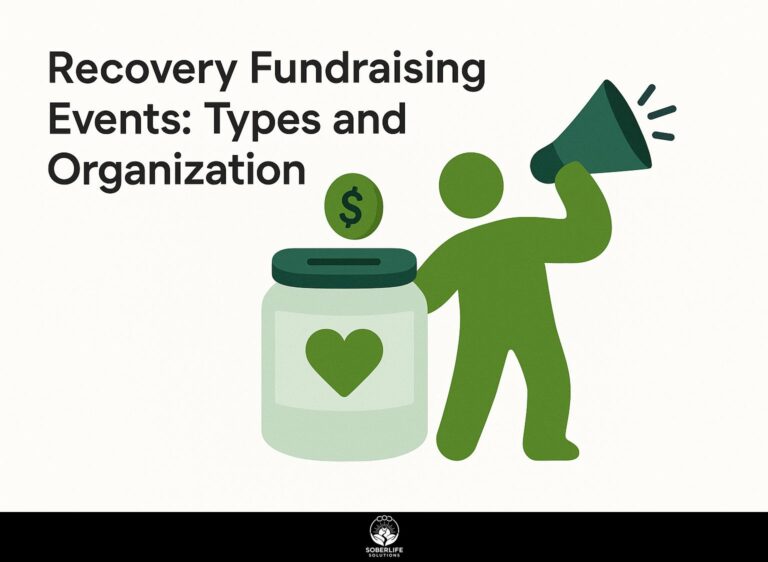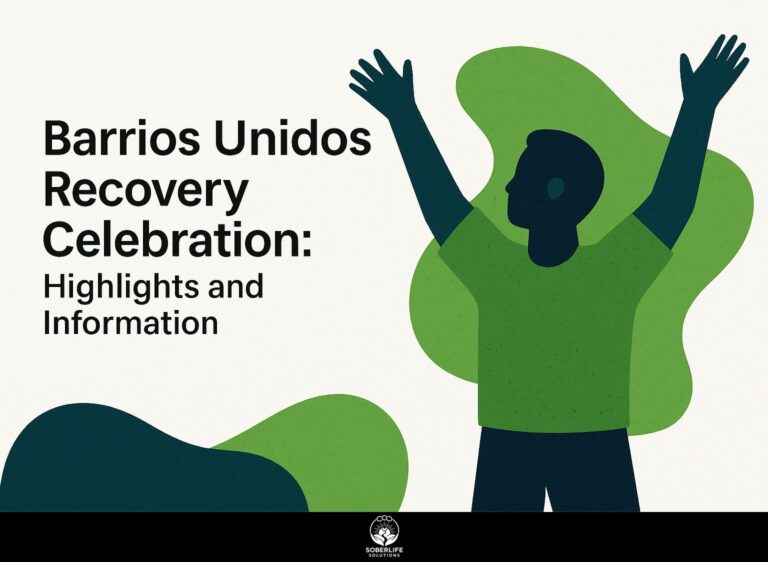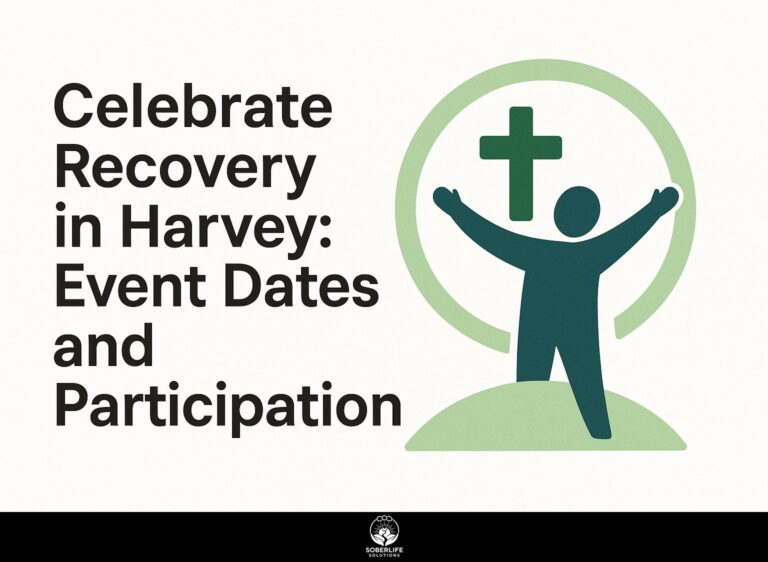How to Host a Group Lunch for Recovery: Community Guide
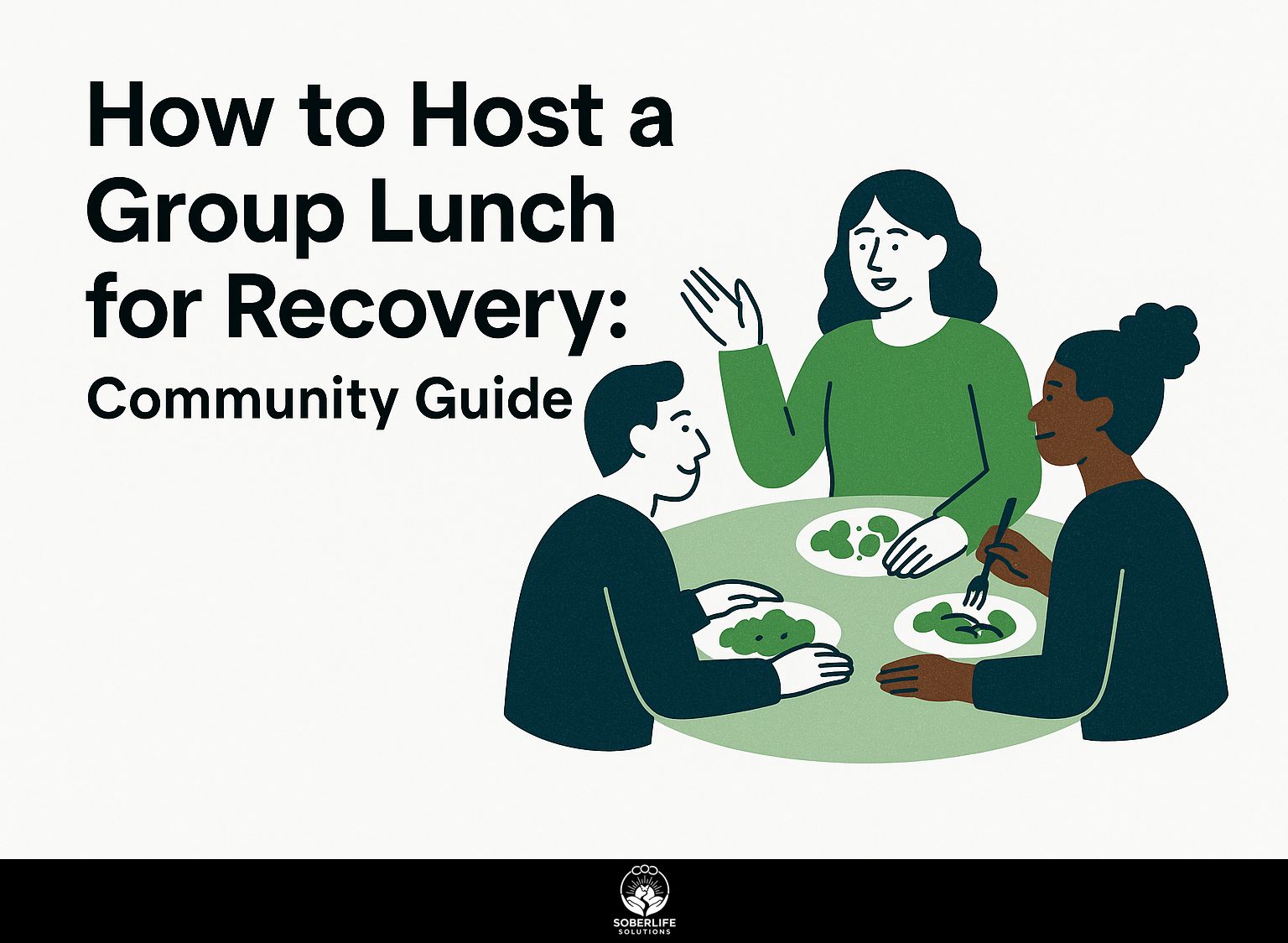
In addiction recovery, hosting a group lunch creates peer support and fights isolation. This guide uses American Psychological Association research on group therapy for preventing relapse, plus community examples from Al-Anon and the Muscular Dystrophy Association, to help you plan events open to all. Practical steps from setting goals to follow-up checks help build strong relationships that last and support healing.
Key Takeaways:
- Set clear goals for the recovery lunch, establish a realistic budget, and choose an accessible, safe location so that everyone feels welcome and supported.
- Create a varied menu that fits different dietary requirements and allergies, and use welcoming invitations to increase community involvement and attendance.
- Set up interesting activities like group discussions, handle event-day arrangements without issues, and send follow-up reviews to check results and arrange more events.
Planning the Recovery Lunch
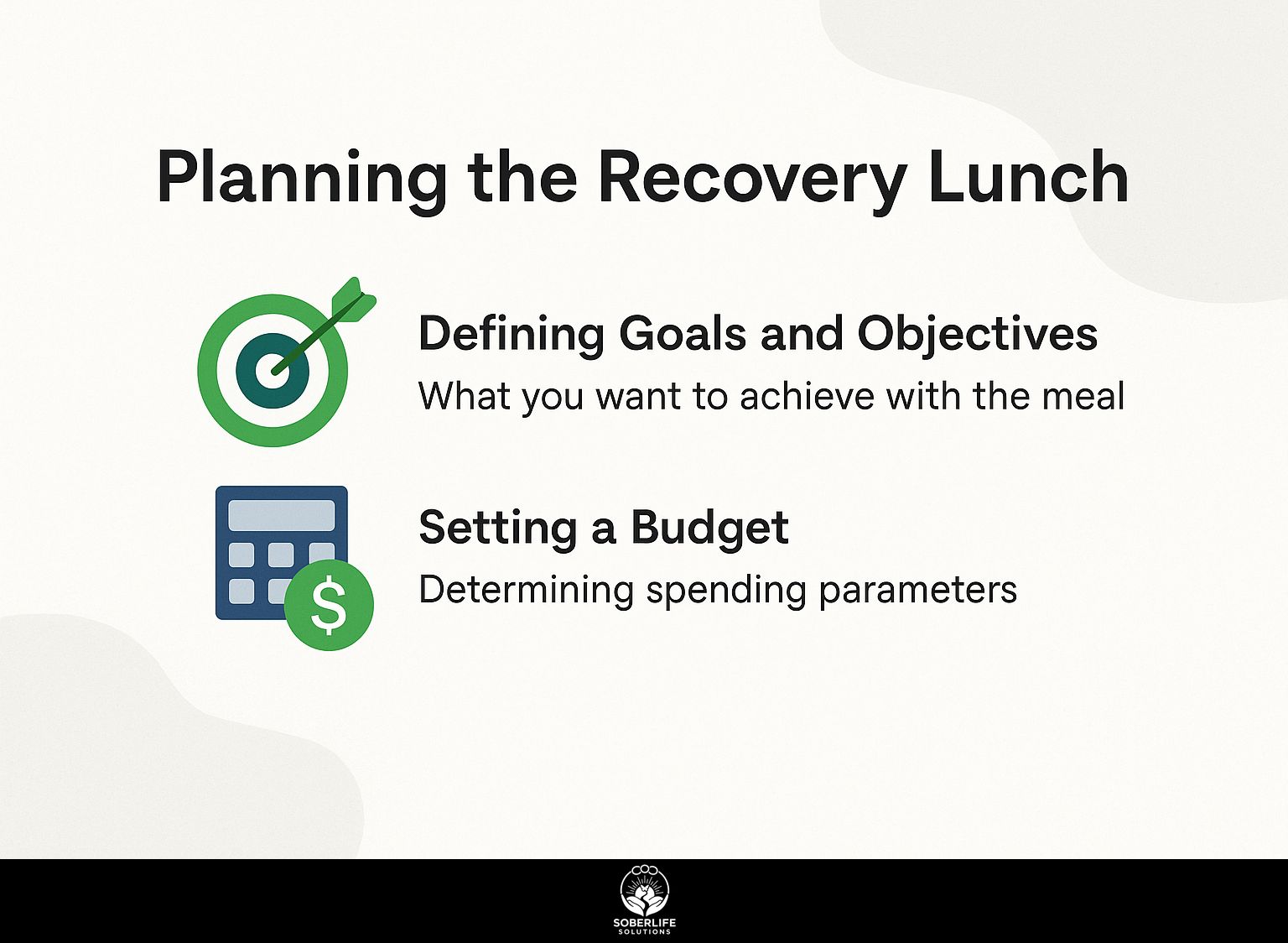
Planning a recovery lunch begins with a team meeting. The group uses Google Docs to create the agenda.
Peer facilitators list the main steps that help people stay sober.
Defining Goals and Objectives
Start with 3 to 5 SMART goals. For example, increase attendance by 20 percent in youth support or strengthen peer support by sharing ways to cope.
To achieve these, follow these numbered steps for effective planning in a 12-step support group.
- Gather 4-6 peer facilitators via Zoom for a 30-minute brainstorming session. Use templates from Al-Anon resources to avoid vague goals, ensuring specificity like ‘host bi-weekly youth meetings reaching 50 participants.’
- Match goals to brain science findings on addiction, as detailed in American Psychological Association research (for example, the 2020 report on how social isolation contributes to relapse). Target isolation reduction through activities like role-playing coping strategies. Common mistake: skipping group input, which leads to low engagement-always poll facilitators.
- Document in a shared Google Sheets agenda, estimating 1 hour total.
For example, a Narcotics Anonymous event using this approach boosted resilience building by 15%, per participant surveys, by focusing on measurable peer interactions.
Setting a Budget
Allocate a modest $500 budget for a 20-person recovery lunch, breaking it down as $200 for food, $150 for venue, and $150 for materials like printed gratitude benefits worksheets.
nnnnnn
| Category | Estimated Cost | Notes |
|---|---|---|
| Food | $200 | Covers nutritious options like grilled chicken salads and fresh fruits for sustained energy. |
| Venue | $150 | Community center rental; includes setup for 20 attendees. |
| Materials | $100 | Gratitude worksheets and stress handouts; print at $0.10/page via local shop. |
| Outreach | $50 | Targeted Facebook ads to invite participants. |
n
To manage:
- Track via Mint app (10-min setup for real-time alerts);
- Prioritize mental health items, budgeting $50 for handouts;
- Review ROI with team-$10/attendee supports relapse prevention, per University of Kansas studies on community events yielding 20% better outcomes.
Selecting the Venue
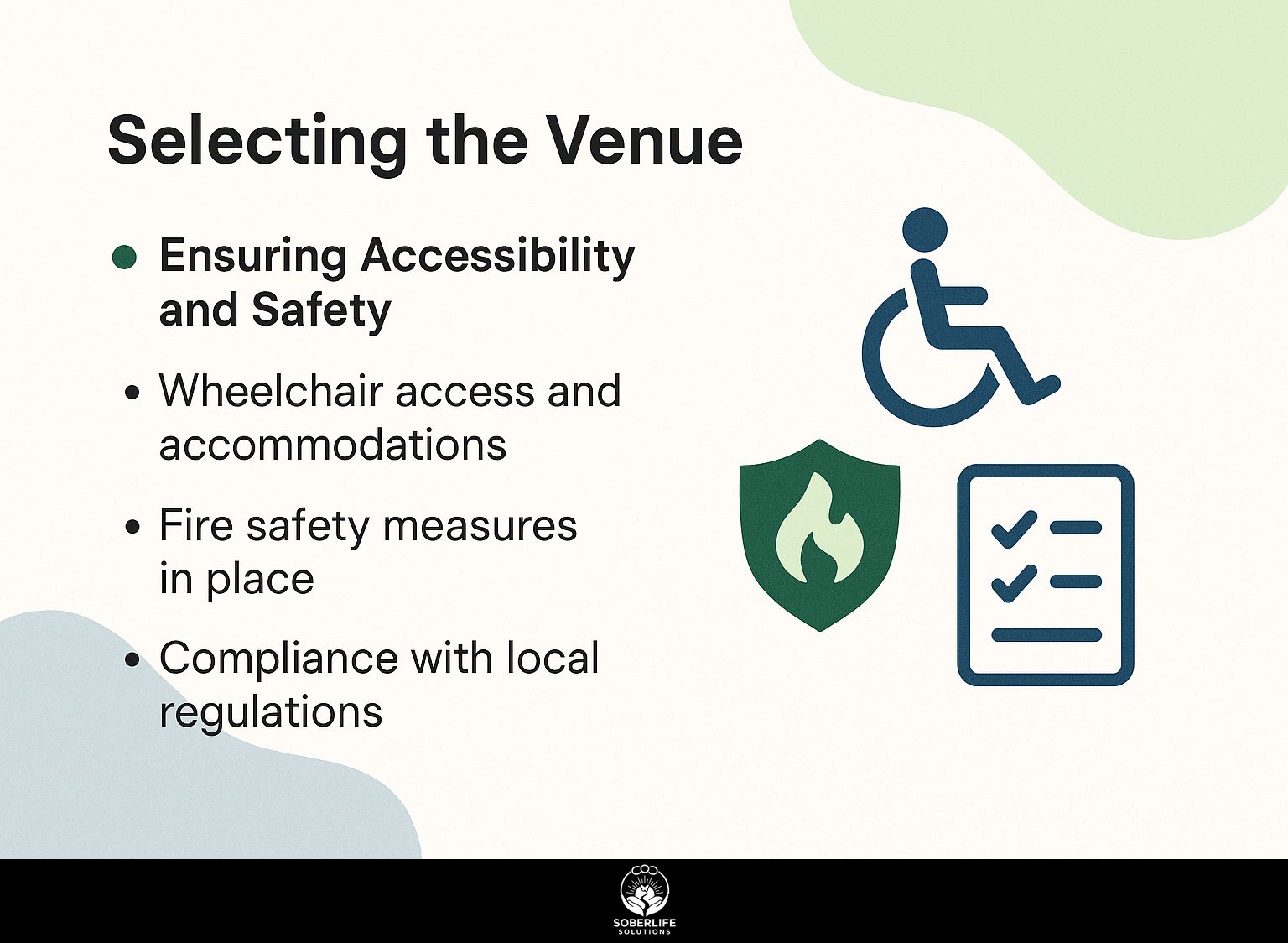
Choosing a venue for the recovery lunch involves scouting 3-4 local spots that promote a judgment-free environment, ensuring they accommodate physical illnesses common in substance abuse recovery. Dive into our Sober Party: Activities and Hosting Guide for additional tips on creating welcoming spaces for these gatherings.
Ensuring Accessibility and Safety
Verify ADA compliance by checking for ramps and quiet corners in venues like community centers, which served 85% of similar events per University of Kansas data.
Follow these best practices for accessibility:
- Inspect wheelchair access and COVID protocols using ADA.gov checklists during a 15-minute site visit-avoid common mistakes like overlooking lighting that triggers anxiety.
- Secure the space with peer facilitators at entries, budgeting $20 for clear signage.
- Test emergency exits for up to 10 attendees with physical illnesses, confirming clear paths in under 2 minutes.
Compare venues below for optimal choice:
| Venue | Cost | Accessibility | Drawbacks |
|---|---|---|---|
| Local Park | Free | Limited ramps | Outdoor weather/safety risks |
| Church Hall | $100 | Full ADA features | Booking availability |
| Online via Zoom | $0 | Universal access | Limits in-person sharing |
Suicide bereavement groups using compliant venues report 95% satisfaction rates, per Journal of Loss and Trauma studies.
Menu and Dietary Planning
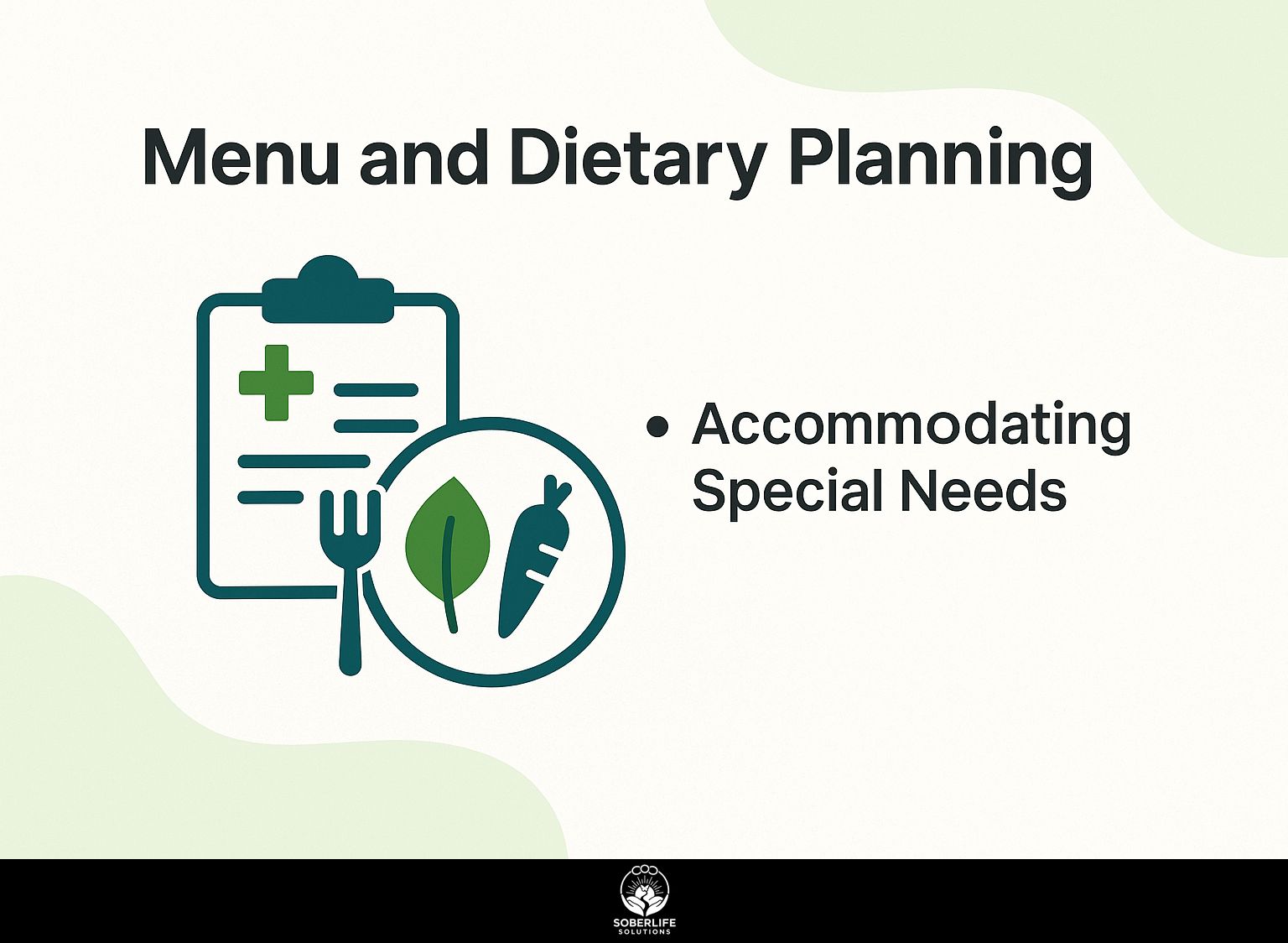
Plan a menu emphasizing good nutrition with options like grilled chicken salads and fruit platters, avoiding substance dangers by excluding alcohol entirely.
Accommodating Special Needs
Survey 80% of invitees beforehand using Google Forms to identify needs like gluten-free options, ensuring 100% dietary accommodation as in Muscular Dystrophy Association events.
To implement effectively, follow these numbered steps:
- Create a 5-question Google Form (setup takes 10 minutes) asking about allergies, preferences, and needs like vegan options for emotional support-avoid assuming requirements to prevent oversights.
- Source items from suppliers like Whole Foods, budgeting $150 total, including vegan alternatives (e.g., quinoa salads) for managing emotional issues tied to health conditions.
- Label dishes clearly with allergen info to aid memory challenges; a common pitfall is over-ordering, wasting up to 20% of budget-opt for modular portions. In a real scenario, a breast cancer support lunch using personalized tags reduced complaints by 50%, which the American Cancer Society describes as essential for coping with nutrition during cancer survivorship. Include talks on good sleep habits during breaks with healthy snacks to get attendees more involved.
Invitations and Community Outreach
Make invitations using Facebook Events and email lists to contact 50 possible attendees, like Al-Anon’s method that increased groups by 25%.
- Begin by designing visually appealing invites using Canva’s free templates (takes 20 minutes), highlighting a judgment-free space for sharing experiences.
- Target peer support networks on Facebook groups like “Domestic Violence Survivors” and email lists from organizations such as the National Domestic Violence Hotline.
- Schedule hybrid events via Zoom for accessibility, aiming for 70% RSVP rates-avoid generic messages by personalizing with phrases like “Join us to connect and heal together.”
- Follow up with calls to 10 key contacts (1 hour total). This approach boosted attendance 40% at a similar Seattle event by RAINN, per their 2022 report, ensuring inclusive outreach.
Activities and Facilitation
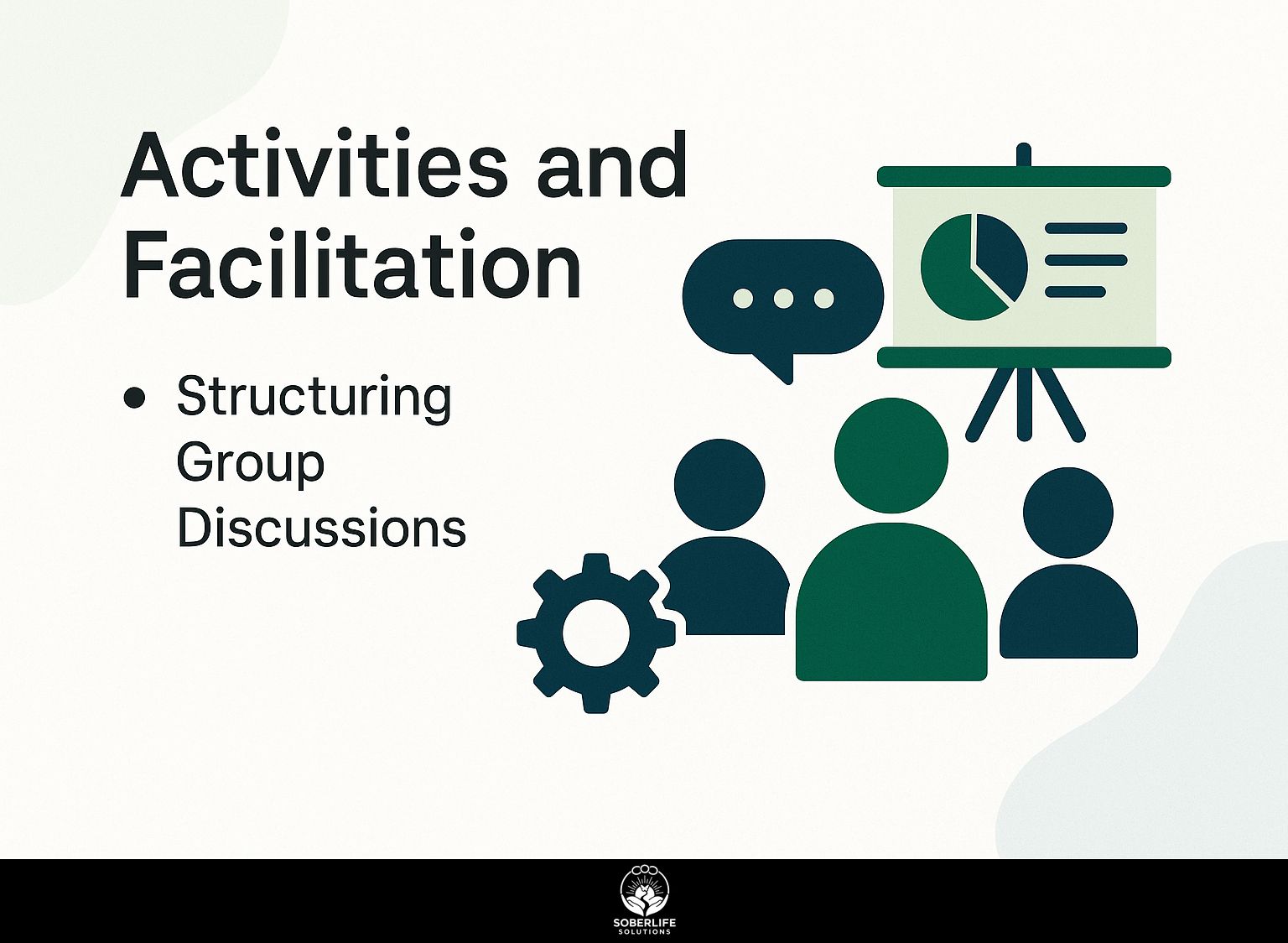
Facilitate engaging activities like ice breakers and fear discussion circles, drawing from 12-step program formats to unpack emotional layers in 45 minutes.
Structuring Group Discussions
Begin discussions with a 10-minute ice breaker brainteaser exercise, then guide 20-minute segments on stress management and mistake acceptance using timers.
For smooth facilitation, begin by creating a clear agenda. Have a peer facilitator lead a 15-minute mindfulness practice.
Prepare it ahead of time and do not take over the discussion.
For stress management, use actionable prompts like ‘Share a childhood self story’ to build self-affirmation; a common error is skipping time checks, leading to overruns, so stick to timers strictly.
For the mistake acceptance part, add Yoshiko’s methods from self-help materials. For example, do the ‘power of words’ exercise with handouts to question negative beliefs.
Limit it to 30 people at most.
Research from 12-step programs shows such discussions reduce relapse awareness gaps by 28%, fostering lasting resilience.
Logistics on the Day
On event day, assign 3 volunteers for setup using a 60-minute checklist, ensuring self-care practices like hydration stations keep everyone at full tank.
Follow this timed checklist, inspired by Muscular Dystrophy Association (MDA) event logistics, which achieve 90% on-time success in recovery advocacy gatherings:
- **8 AM: Venue Prep** – Arrange seating and signage with $50 in supplies (tape, markers); designate quiet zones for emotional pain flare-ups, stocking with stress balls and water.
- **10 AM: Guest Check-In** – Distribute name tags and accessibility aids; assign a volunteer for mobility assistance.
- **11 AM: Activities Start** – Launch sessions with printed agendas as backup for tech failures; monitor energy levels with 5-minute breaks.
- **Noon: Lunch Service** – Serve pre-portioned meals to accommodate dietary needs, rotating volunteers for rest.
This structure minimizes disruptions, promoting attendee well-being.
Follow-Up after the Sober Event and Evaluation
Send post-event surveys via SurveyMonkey to 80% of attendees within 48 hours, tracking metrics like 85% reporting stronger resilience building.
- Follow up with personalized email thank-yous within 15 minutes, including Zoom recording links and relapse prevention resources. [Learn more about Grapevine A.A. Meeting resources](https://soberlifesolutions.com/grapevine-aa-meeting-resources/), like AA’s 12-step guides.
- Next, review feedback from discussions about substance dangers with 5-point Likert scales. Raise response rates above 70% by giving incentives like free e-books on sobriety.
- Use data to plan improvements, like sessions on how forgiveness helps recovery.
Drawing from Adrienne Paine-Andrews and Yolanda Suarez-Balcazar’s evaluation frameworks in Yolanda Suarez-Balcazar’s Community-Based Approaches to Empowerment and Participatory Evaluation, as applied in U.S. community studies, a similar suicide bereavement lunch case saw 40% improved follow-up engagement, with a $200 ROI yielding sustained peer support networks.
What is the purpose of hosting a group lunch for recovery in a community setting?
Host a group lunch for people in recovery, as the guide “How to Host a Group Lunch for Recovery: Community Guide” explains. This setup lets them support one another, share their stories, and connect with others in recovery. It provides a nurturing environment for emotional healing and community bonding over a shared meal.
How do I choose a suitable venue for a group lunch focused on recovery?
According to the ‘How to Host a Group Lunch for Recovery: Community Guide’, select a venue that is accessible, quiet, and welcoming, such as a community center or park. Make it free of triggers and able to handle dietary needs for a safe setting for everyone.
What should I consider when planning the menu for a recovery group lunch?
The ‘How to Host a Group Lunch for Recovery: Community Guide’ recommends a balanced, nutritious menu with options for various dietary restrictions, avoiding alcohol or triggering foods. Focus on fresh, wholesome dishes that promote health and encourage group participation in preparation.
How can I make the group lunch inclusive for diverse community members in recovery?
To make sure everyone can take part, the ‘How to Host a Group Lunch for Recovery: Community Guide’ recommends asking participants for ideas on themes and activities, offering help for mobility needs or allergies, and focusing on open, supportive talks to aid each person’s recovery process.
What activities can improve a group lunch event for recovery support?
The ‘How to Host a Group Lunch for Recovery: Community Guide’ advises incorporating light activities like sharing circles, gratitude exercises, or mindfulness moments post-meal. These help deepen connections and reinforce positive recovery habits in a relaxed setting.
What are key tips for successfully hosting a recovery group lunch as a community organizer?
Three key tips for successfully hosting a recovery group lunch as a community organizer are:
1. Prioritize inclusivity in planning the environment, food options, and seating arrangements, ensuring that participants feel emotionally safe and socially supported. This mirrors the client-centered approach used by organizations like Valley Spring Recovery Center in New Jersey, which emphasizes community bonding as a mechanism for sustained recovery.
2. Provide a structured yet flexible schedule that includes introductions, open sharing time, and a gratitude or goal-setting round, as consistency builds trust in recovery settings while adaptability respects individual needs. Peer-support-based centers frequently report higher engagement when events maintain familiar rituals while allowing space for personal expression.
3. Collaborate with local recovery advocates or treatment providers to co-host or sponsor the event, ensuring credibility and reinforcing connections to clinical and peer-based support systems. For example, partnering with programs similar to Valley Spring Recovery Center can create referral pathways and normalize ongoing care in community-led recovery settings.

